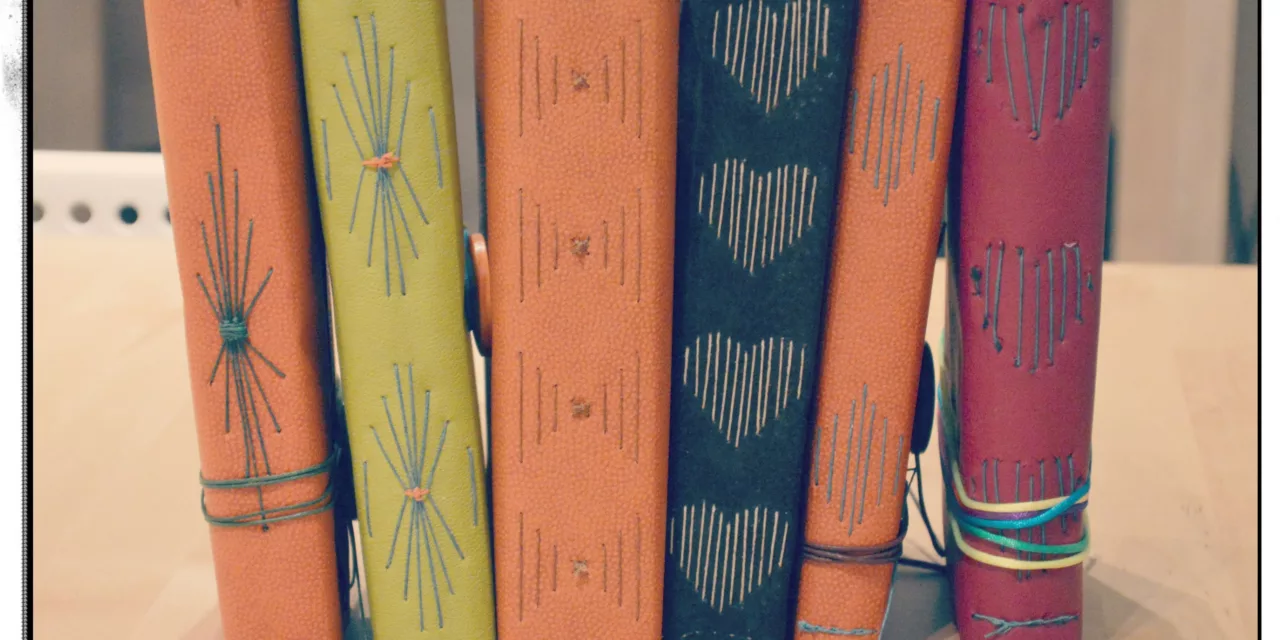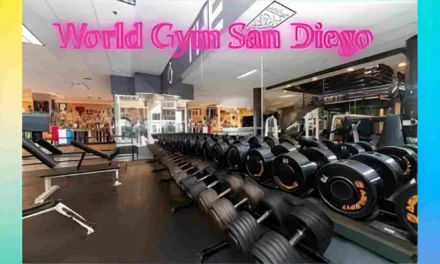Introduction:
Embarking on the journey of bookbinding offers a unique opportunity to blend creativity with technical skill. With a rich history spanning centuries, the art and craft of bookbinding continue to captivate enthusiasts and professionals alike.Whether you are a beginner or a seasoned artisan, exploring various bookbinding techniques can unlock a world of boundless possibilities and creative expression.
Understanding the Basics of Bookbinding:
Bookbinding is the process of physically assembling a book from an ordered stack of paper sheets that are folded together into sections or sometimes left as a single stack. The stack is then bound together along one edge by either sewing with thread through the folds or by a layer of flexible adhesive. Additional processes such as trimming the edges, applying covers, and creating endpapers may also be involved in the bookbinding process. The aim is to create a durable and aesthetically pleasing structure that protects and presents the contents within.

Essential Tools and Materials:
Before delving into the intricacies of bookbinding, familiarize yourself with the fundamental tools and materials required for this craft. Essential items such as paper, thread, needles, adhesives, and covers lay the foundation for executing various binding techniques. Investing in quality tools not only ensures a smooth workflow but also contributes to the overall quality and durability of the finished product.
Mastering the Techniques of Bookbinding:
A Step-by-Step Guide

1. Coptic Binding:
Begin your bookbinding journey by mastering the ancient art of Coptic binding. Learn the step-by-step process of creating exposed spine books that lay flat when opened, making them ideal for sketchbooks and journals.
Certainly, here are five key points about Coptic binding, a historical bookbinding method:
1. Historical Roots:
Coptic binding originates from the early Christian Copts of Egypt, dating back to the 2nd century AD, and it is known for its distinctive exposed spine and decorative stitching.
2. Exposed Spine:
One of the defining features of Coptic binding is the visible spine, which allows the book to open flat and enables the reader to view the binding structure, creating an aesthetic appeal.
3. Sewing Technique:
Coptic binding involves a unique stitching method where the sections of the book are sewn together using a chain stitch, allowing for flexibility and durability, and enabling the book to open 360 degrees.
4. Decorative Elements:
Often, Coptic bindings incorporate decorative elements such as intricate patterns or colored threads, showcasing the craftsmanship and artistic flair of the binder.
5. Contemporary Adaptations:
While traditionally used for ancient manuscripts, Coptic binding has seen a revival in contemporary bookbinding as a popular technique among artists and book enthusiasts, owing to its distinctive appearance and functional design.

2. Japanese Stab Binding:
Immerse yourself in the elegance of Japanese stab binding, where precise stitching and intricate patterns create visually captivating books and albums. Follow the detailed instructions to incorporate this technique into your creative repertoire.
Certainly, here are five key points about Japanese stab binding, a traditional bookbinding technique from Japan:
1.Historical Origin:
Japanese stab binding, known as “Yotsume toji” or “Four-Hole Binding,” has its roots in ancient Japan, where it was used for the binding of manuscripts and early books, often featuring unique and intricate designs.
2. Binding Technique:
This method involves puncturing holes along the spine of the book’s gathered pages and covers, followed by threading a single length of thread through these holes in a specific pattern, creating a distinctive and decorative binding style.
3. Aesthetics and Simplicity:
Japanese stab binding emphasizes the beauty of simplicity, featuring clean lines, minimalistic design, and an emphasis on the natural materials used in the process, often showcasing the elegance of the exposed spine and cover.
4. Versatility:
While historically used for various documents such as manuscripts, diaries, and albums, Japanese stab binding has gained popularity among modern book artists and enthusiasts for its versatility and adaptability to a range of creative projects, including art books, journals, and scrapbooks.
5.Cultural Significance:
Beyond its practical uses, Japanese stab binding holds cultural significance, reflecting the Japanese emphasis on harmony, balance, and the appreciation of natural materials and craftsmanship, making it a significant part of Japanese art and craft heritage.

3. French Stitch Binding:
Explore the intricacies of French stitch binding, a technique that combines functionality with decorative appeal. Follow the comprehensive guide to produce handcrafted journals and books adorned with eye-catching external stitching.
Certainly, here are five key points about French stitch binding, a notable bookbinding technique:
1. Historical Context:
French stitch binding, also known as “laced-in binding,” has a rich history and is associated with the traditional craft of bookbinding in France, featuring a distinctive stitching pattern that adds both functionality and aesthetic appeal.
2. Stitching Method:
This binding method involves creating a series of evenly spaced holes along the spine of the book, which are then laced with thread in a crisscross pattern, securing the pages and covers together, while also providing an elegant and durable binding structure.
3. Durability and Flexibility:
French stitch binding is renowned for its durability, ensuring that the book remains securely bound over time. Additionally, the technique allows for flexibility, enabling the book to open flat, providing a comfortable reading experience.
4. Decorative Embellishments:
French stitch binding often incorporates decorative elements such as colored threads, beads, or ribbons, enhancing the visual appeal of the book and showcasing the binder’s creativity and attention to detail.
5. Contemporary Adaptations:
While rooted in traditional bookbinding practices, French stitch binding has evolved to accommodate various styles and materials, making it a popular choice among modern bookbinders and artisans seeking to combine traditional craftsmanship with contemporary design sensibilities.

4. Perfect Binding:
Dive into the realm of perfect binding, a widely used method for producing paperback books. Learn the art of applying adhesive to the spine and affixing a cover, enabling you to create professional-quality novels, magazines, and catalogs.
Certainly, here are five key points about perfect binding, a widely used bookbinding method:
1. Common Method:
Perfect binding is a popular and cost-effective bookbinding technique used for producing paperback books, magazines, and catalogs. It involves the adhesion of the book’s pages to the cover using a strong yet flexible adhesive.
2. Single-Step Process:
Unlike traditional methods such as sewing, perfect binding streamlines the binding process into a single step, where the book’s gathered pages are trimmed, roughened, and then glued to the spine of the cover, creating a clean and professional finish.
3. Durability and Flexibility:
Although perfect binding is commonly used for softcover books, when executed properly, it can result in a durable and robust binding that allows the book to withstand frequent use and handling, making it suitable for various publications.
4. Customization Options:
Perfect binding allows for a range of customization options, such as the choice of cover material, paper stock, and finish, enabling publishers to create visually appealing and professional-looking publications tailored to their specific requirements.
5. Wide Application:
Due to its efficiency, affordability, and polished appearance, perfect binding is widely utilized in the production of paperback books, manuals, reports, and other printed materials, making it a standard choice for publishers seeking a balance between quality and cost-effectiveness.

5. Smyth Sewn Binding:
Explore the durability and flexibility of Smyth sewn binding, a technique known for its resilient hardcover books. Follow the step-by-step instructions to master this method and create long-lasting, high-quality bound publications.
Here are five key topics related to Smyth sewn binding, a durable and high-quality bookbinding technique:
1. Construction Technique:
Smyth sewn binding is a method that involves sewing together individual signatures or sections of a book using a specific sewing pattern, which creates a sturdy and long-lasting binding structure. This process enhances the durability and overall quality of the book.
2. Durability and Lay-Flat Ability:
Smyth sewn binding results in a book that can withstand frequent use, ensuring that pages remain securely bound over time. Additionally, this technique allows the book to open flat, providing a convenient and comfortable reading experience for users.
3. Thread Sewing Process:
The Smyth sewing process involves threading a continuous length of thread through the folded sections of the book, creating a series of interconnected stitches that run along the spine. This meticulous sewing method contributes to the overall strength and longevity of the binding.
4. Premium Book Production:
Smyth sewn binding is commonly used for high-end and premium book production, including hardcover books, art books, and collector’s editions, where durability and a high-quality finish are paramount.
5.Industry Standard:
Due to its reputation for strength, durability, and professional appearance, Smyth sewn binding is often regarded as an industry standard for producing high-quality books that are designed to last for generations, making it a preferred choice for publishers and book enthusiasts who value craftsmanship and longevity.

6. Spiral Binding:
Discover the practicality of spiral binding, ideal for creating notebooks and instructional manuals. Familiarize yourself with the process of using coils to bind pages, allowing your books to lay flat and facilitating effortless page-turning.
There are five key points about spiral binding, a popular and practical bookbinding method:
1. Versatile Binding Technique:
Spiral binding, also known as coil binding, involves inserting a plastic or metal coil through small holes punched along the edge of a book’s pages, providing a versatile and practical binding option for a variety of documents and publications.
2. Easy Page Turning:
The spiral binding’s design allows for effortless page turning and ensures that the book lays flat when opened, providing a user-friendly experience for reading, writing, and referencing.
3. Customizable and Durable:
Spiral binding accommodates a wide range of document sizes and thicknesses, making it suitable for creating notebooks, manuals, calendars, and presentations. The durable coils help to protect the pages and allow for easy handling and frequent use.
4. Cost-Effective Solution:
As a cost-effective binding method, spiral binding is commonly used for producing training manuals, workbooks, and other instructional materials, providing an efficient and budget-friendly option for businesses, schools, and organizations.
5. DIY-Friendly:
With the availability of at-home binding machines and kits, spiral binding has become a popular option for do-it-yourself enthusiasts and small-scale publishing projects, allowing individuals to create professional-looking documents and presentations with ease.

7. Exposed Stitch Binding:
Unleash your artistic expression with exposed stitch binding, highlighting the beauty of the binding process itself. Follow the guide to create visually striking handmade journals and specialty books adorned with intricate stitching patterns.
Certainly, here are five key points about exposed stitch binding, a distinctive and visually appealing bookbinding technique:
1. Visible Stitching:
Exposed stitch binding, as the name suggests, prominently displays the stitching along the spine or edges of the book, adding an artistic and decorative element to the overall design.
2. Handcrafted Aesthetic:
This binding method often emphasizes a handcrafted aesthetic, highlighting the beauty of the binding process and showcasing the artistry and craftsmanship of the binder.
3. Structural Integrity:
Exposed stitch binding not only offers an eye-catching design but also ensures structural integrity, providing a durable and long-lasting binding that can withstand regular use and handling.
4. Creative Variations:
Bookbinders often experiment with various stitching patterns, thread colors, and materials, allowing for a range of creative variations that can complement the book’s content and aesthetic theme.
5. Artistic Expression:
Exposed stitch binding serves as a medium for artistic expression, enabling binders to incorporate unique and intricate stitching designs that contribute to the overall visual appeal and individuality of each book.
Embracing Creativity and Personalizing Your Bound Creations.
Beyond mastering the techniques, infuse your bound creations with personal touches.Experiment with decorative elements, custom covers, and unique embellishments that reflect your artistic style and vision.Let your imagination run free as you explore various ways to make each bound creation a reflection of your creativity and passion for the art of bookbinding.
Main point about Bookbinding:
Mastering the art and craft of bookbinding opens up a world of artistic exploration and creative fulfillment.By understanding the foundational elements, mastering essential techniques, and infusing your unique style, you can create beautifully bound works that not only preserve knowledge but also serve as timeless testaments to your dedication and ingenuity. Let your journey into the realm of bookbinding be a source of inspiration and discovery, leading you to craft bound creations that resonate with readers and art enthusiasts alike.
The Art and Craft of Bookbinding Journey Through Pages and Covers.
Bookbinding, the art of fastening and protecting the pages of a book within a cover, holds a rich history that dates back centuries.From the exquisite hand-bound manuscripts of ancient times to the mass-produced paperbacks of today, bookbinding has evolved alongside the progression of human civilization.
The Historical Tapestry of Bookbinding:
In its earliest form, bookbinding emerged alongside the invention of writing and the subsequent creation of scrolls. Ancient civilizations used various materials, such as papyrus, leather, and parchment, to craft these early books. However, it was not until the Coptic period that the concept of the modern book began to take shape, with techniques like Coptic binding coming to prominence. The Medieval Era witnessed the rise of the illuminated manuscript, where bookbinding transcended mere functionality to become an art form in itself.
Lavish materials, intricate designs, and meticulous craftsmanship defined this period.The invention of the printing press by Johannes Gutenberg in the 15th century revolutionized book production, setting the stage for the industrialization of bookbinding.
The Evolution of Bookbinding Techniques:
Traditional bookbinding techniques involve a meticulous process that encompasses several stages, including folding, gathering, sewing, and attaching covers. Smyth sewing, case binding, and perfect binding are some of the well-known methods employed in bookbinding, each catering to different purposes and book types. In recent times, modern advancements in technology have led to the introduction of automated and industrial bookbinding processes.
Techniques such as adhesive binding and saddle stitching have become more prevalent in the mass production of books, ensuring efficiency and cost-effectiveness.
The Role of Bookbinding in the Digital Age:
With the advent of e-books and digital publishing, the art of bookbinding faces new challenges. However, it has not lost its relevance.The allure of physical books, their tangible presence, and the sensory experience they provide continue to captivate readers and collectors alike.
Bookbinding has also found a new niche in the realm of artisanal and bespoke book production, catering to a clientele that values craftsmanship and individuality.
Preservation and Restoration of Books:
Preserving and restoring old and rare books is an essential aspect of bookbinding. Book conservators employ specialized techniques to repair and protect valuable manuscripts and texts, ensuring that they remain accessible for future generations. Through meticulous processes such as deacidification, resewing, and rebacking, these professionals safeguard the legacy of written human history.
The Contemporary Bookbinding Scene:
In the contemporary art world, bookbinding has transcended its functional roots to become an expressive medium for artistic exploration.
Book artists and designers experiment with unconventional materials, innovative structures, and multimedia integration, pushing the boundaries of what constitutes a book.
This fusion of traditional craftsmanship with modern creativity has given rise to a diverse and vibrant landscape within the realm of bookbinding.
Conclusion:
From its humble origins as a means of preserving written knowledge to its current status as a thriving art and craft, bookbinding remains an integral part of human culture. Its ability to adapt and evolve with changing times speaks to the enduring significance of the printed word and the enduring appeal of the physical book.
As technology continues to shape the way we consume information, the art of bookbinding stands as a testament to the enduring power of the written word and the beauty of the bound book.
THE POWERBALL WINNERS: STORIES OF LIFE-CHANGING WINS





